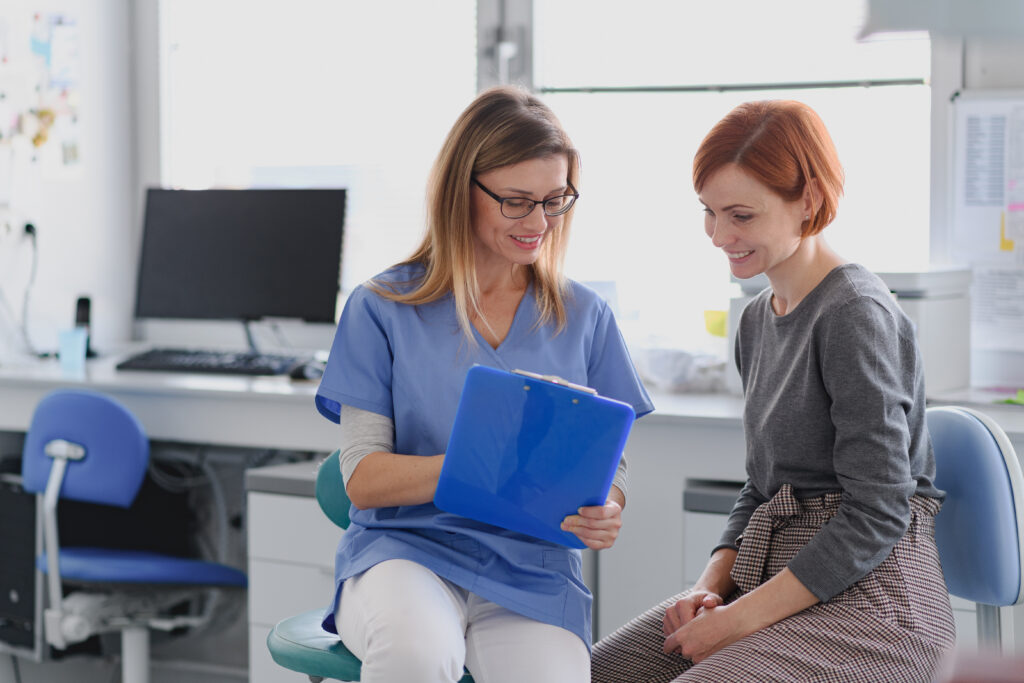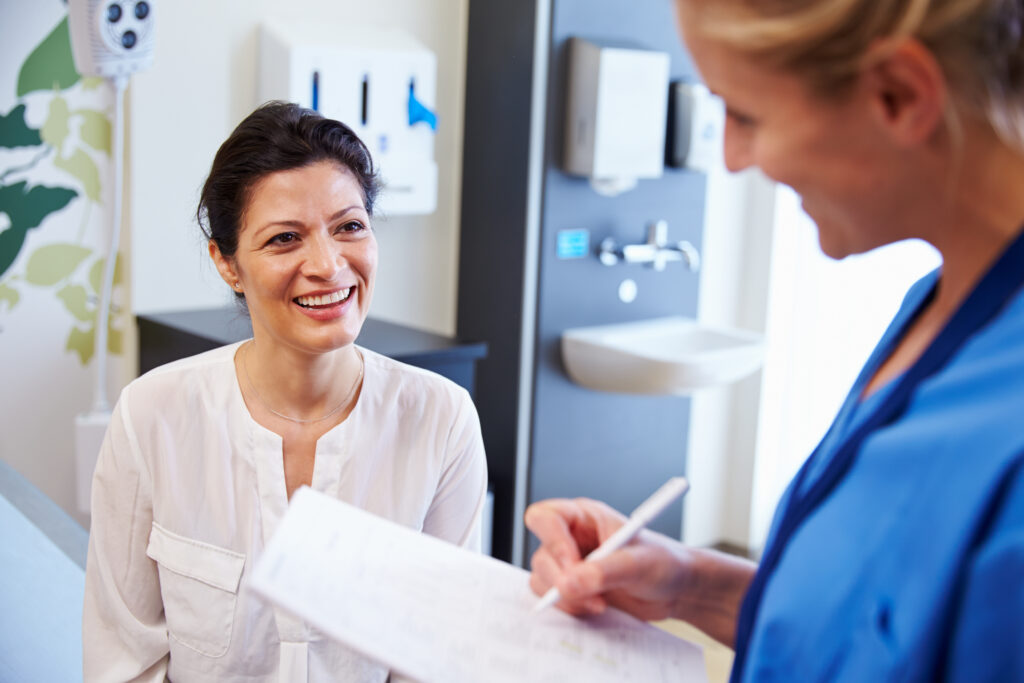Improving patient information on waiting times in radiology
How did the journey start?
The Northwest Radiography Research Team at Warrington and Halton Hospitals NHS Trust (WHH) were keen to undertake improvement work that was more patient-focused and built on their previous research that asked patients “What Matters to You?”: Always Events® was considered a practical approach for translating what is important to patients into service improvements. The approach also aligned with WHH’s Quality, Sustainability, People framework and supports the goal for patients to be at the centre of everything the organisation does. After two members of staff attended the NHS England’s Always Events cohort training, a co-production team known as the Action Team or ‘A-team’ was formed. This was an interdisciplinary team which included volunteers, receptionists, student radiographers, the clinical lead, managers and the Head of Patient Experience. Two volunteer participants of the
A-team were members of the public who worked closely with patients receiving care in the radiology department throughout the Always Event journey to ensure they reflected the patient voice.
What mattered most to patients?
Complaints and a previous patient survey showed that waiting times in the main x-ray waiting room was an area for improvement. To find out what mattered most to patients in this area, the volunteers surveyed 30 patients using a paper questionnaire that had been co-produced by the A-team. From the information collected it was identified that it was important for patients to be informed of their waiting time when they arrived in the radiology department. The A-team developed their vision statement in the voice of the patient to focus the work and to ensure the change ideas developed reflected this.
I will always be aware of the waiting time in the main x-ray waiting area
Vision Statement
Implementing and testing change
To improve patients’ knowledge of their waiting time, through co-production and collaboration the A-team developed the following change ideas:
- Small flipchart on reception desk with current waiting times that is adjusted
- Improved signage in waiting room
- Update day list settings on the electronic records system (CRIS) to show appointment times
- Receptionist to verbally inform patients of their waiting time when they report to reception
- Radiographers to inform reception staff if there are any delays due to equipment or staff issues
These change ideas were tested through Plan-Do-Study-Act (PDSA) cycles, with feedback from patients regularly sought via the “Ask 5” method to check on the reliability of implementation; the volunteers asked 5 patients whether they were informed about their waiting
time on separate occasions and at different time periods – both before and after the patient had received their x-ray. The data showed that the 90% target in their aim statement was being achieved although after the fourth PDSA cycle this dipped to 70% compliance.
This highlighted where the reliability of the process could be improved; occasionally reception staff rotate through other departments, so some staff were not aware of the changes. This led to an improvement, suggested by the receptionists, where the Always Event was discussed within their morning meeting to check that everyone was kept informed. During the testing phase, staff were also consulted
about their experiences of implementing the changes via a survey. This not only showed how small improvements could be made but also indicated that staff were overall positive about the changes; patients were happier as they were informed of their waiting time, which in turn had a positive impact on staff morale.
The A-team, in collaboration with staff, created job aid tools for the receptionists and radiographers involved in implementing the changes to help ensure these became embedded into standard practice. The job aid tools acted as checklists to ensure the
necessary processes were being carried out.
What helped with implementation?
Volunteers
- The volunteers were key to the success of the Always Event. Although it was not possible to recruit patients directly to the A-team, the volunteers became the patient voice as they regularly spoke with patients in the waiting room.
- As they were not members of staff, the volunteers encouraged open and honest discussions with patients
Staff engagement
- Prior engagement work undertaken in the department (‘What Matters To You as Staff’) was important for helping to secure staff support for the Always Event as they already had an understanding of the ethos.
- The A-team communicated with frontline staff about the Always Event at an early stage via presentations and inspired enthusiasm in staff.
A-team
- Good teamwork was an important facilitator to implementing the Always Event. The drive and enthusiasm of the clinical lead, together with the support from the Patient Experience Manager were key.
- Due to varying work commitments, staff members of the A-team fluctuated but this had the advantage of new ideas being generated.
- The team ensured they had an advocate for each of the areas within the radiology department that were impacted by the Always Event so that everyone contributed and supported the work.
Structured A-team meetings
- Ground rules for the A-team meetings were set at the beginning: everyone should have a voice and all ideas would be considered.
- Each meeting had a structured agenda with a recap and agreement of next steps. Links to supporting materials/documents were included in the presentation and minutes.
- The clinical lead ensured she took a step back so that decisions were made as a group.
Department support
- Support from the department was beneficial. The managers saw the value of the approach and supported the clinical lead by enabling her to assign some of her time to work on the Always Event.
Central support
- NHS England and Improvement monthly cohort calls were helpful for maintaining the momentum and for peer support.
- The individual support and advice provided by the central team was valued.
Achievements
Improved patient and staff experiences
The target in the aim statement was reached with 90% of patients being informed of their waiting time in the main x-ray waiting area. The changes have been sustained and embedded into standard practice. The A-team placed a poster in the waiting area to show the success of the Always Event so that patients could see that changes were made based on what is important to them. Since the Always Events changes have been implemented, there have been fewer complaints from patients and staff have received positive feedback about the changes.
In addition to the positive experiences of staff that stemmed from happier patients, an unexpected benefit of the Always Event was that it fostered more collaborative working between staff. By working more closely together they understood each other’s roles better and it bought them together as a department. The clinical lead for the A-team was also proud to see that those members of staff who were involved in the Always Event grew in confidence.
Value of volunteers
It was clear from the information gathered from patients during the testing of the Always Event that they appreciated being able to talk to the volunteers whilst in the waiting area. The organisation has therefore secured their volunteers to continue to attend the Radiology Department to meet and greet patients.
Inclusion in strategies and standards
Following the successful implementation of the Always Event at WHH, this methodology is now referenced in a Society and College of Radiographers document which provides guiding principles on patient public and practitioner partnerships. The approach has also been linked to their strategic priorities.
The Always Event has also provided evidence for the Quality Standard for Imaging (QSI) which set out the criteria that defines a quality imaging service. It was noted that the Always Event aligns with many of the evidence frameworks.
Spreading the ethos
The Always Event approach has left a positive legacy; radiology students saw the value of understanding what matters most to patients and now have a better understanding of the importance of patient centred care.

